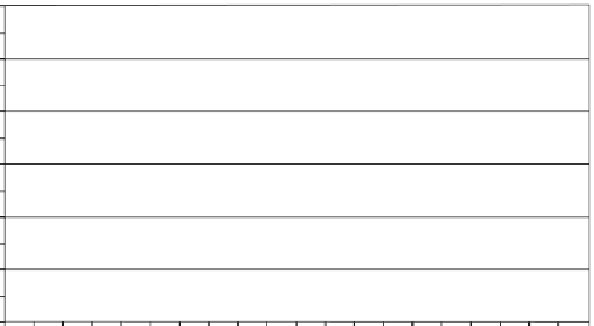Environmental Engineering Reference
In-Depth Information
6 00 0
5 00 0
4 00 0
3 00 0
2 00 0
1 00 0
0
0
10 000 20 000 30 000 40 000 50 000 60 000 70 000 80 000 90 000
100 000
(mg/kg)
Carriageway size (m2)
Fig. 3
Influence of size of carriageway on hydrocarbons contents in basins sediments
Table 2
Hydrocarbon average and maximum contents in sediments with different basin typologies
and trafics
Hydrocarbon contents
Average
Maximum
Infiltration basin
54.7
350
Stormwater pond, traffic <20,000 vehicles/day
135
900
Stormwater pond, traffic >20,000 vehicles/day
190
1620
Concerning the hydrocarbons content, two basins typologies have been identified:
basins under water (stormwater ponds) and dry basins (infiltration basins).
Hydrocarbon concentrations in dry areas are very low. This result seems to be logical, as
exposure to ambient light and air favor hydrocarbon degradation. Low values in
hydrocarbons will, however, have to be confirmed with further samples.
Concerning stormwater ponds; below 20,000 vehicles/day the measured hydro-
carbon contents are under threshold-values, but it becomes important and well
above threshold-values above 20,000 vehicles/day (Table
2
).
For MTE, distinguishing between basins under water and dry basin has not been
retained. Cadmium, chrome and nickel are present in non significant quantities in
ditches. Zinc, lead and copper are likely present in quantities beyond the threshold
values: this result can be explained by the superior efficiency of stormwater ponds
and infiltration basins on settling: MTE are indeed mainly linked to fine particles,
less easy for settling
[5]
. Before any reuse in embankment, it is convenient to
characterize the zinc, lead, and copper content in sediments. Hydrocarbon charac-
terization is only for traffic intensities superior to 20,000 vehicles/day (Table
3
).


































